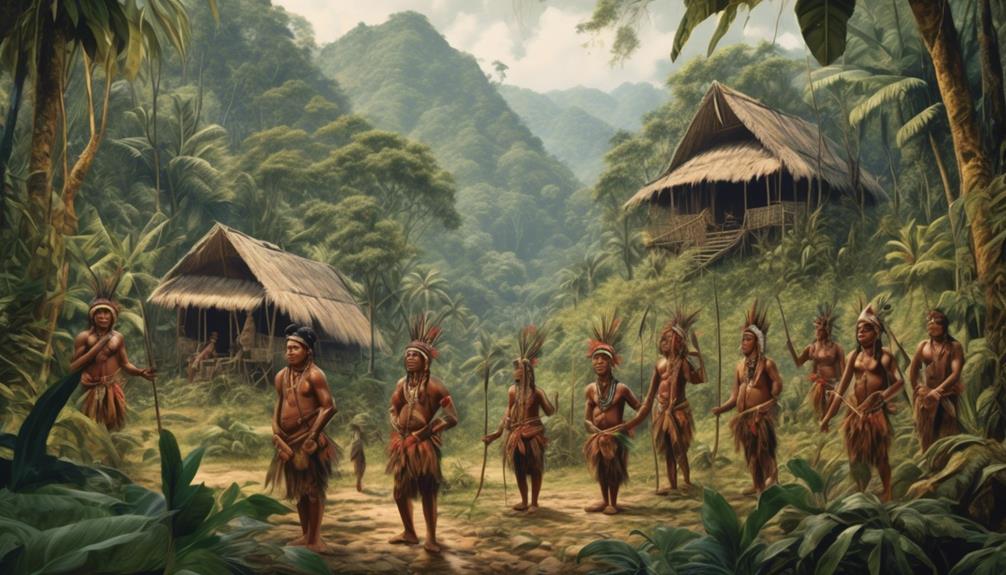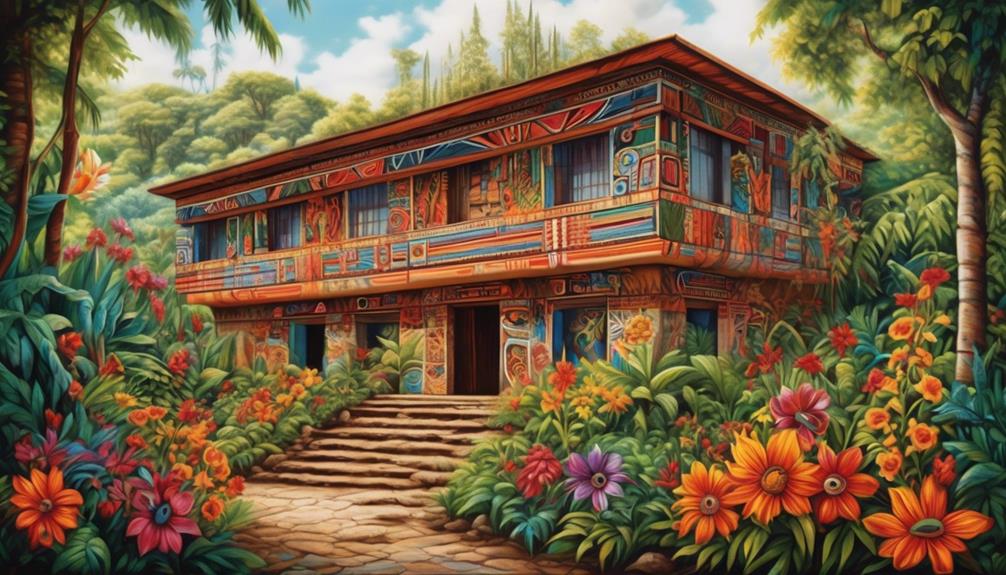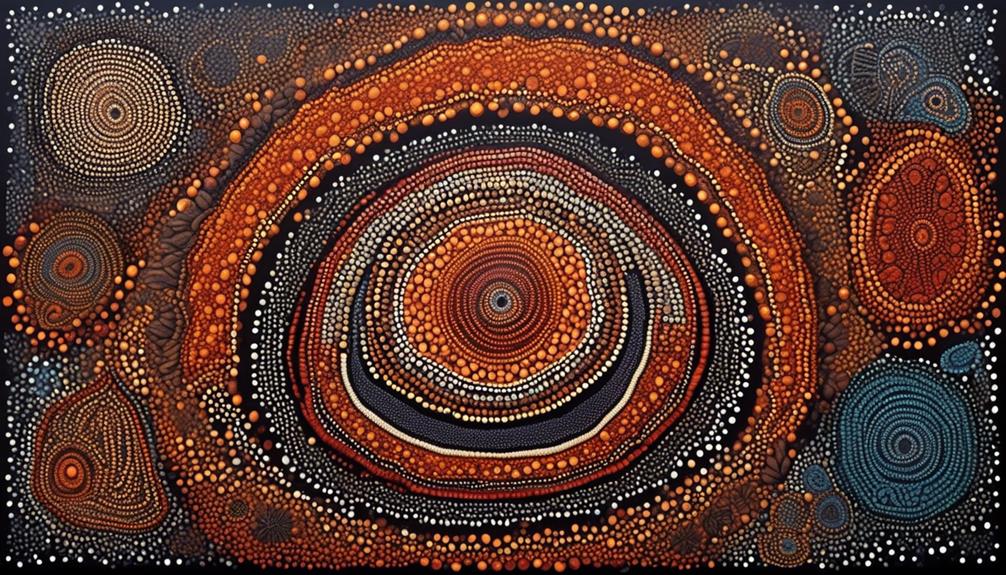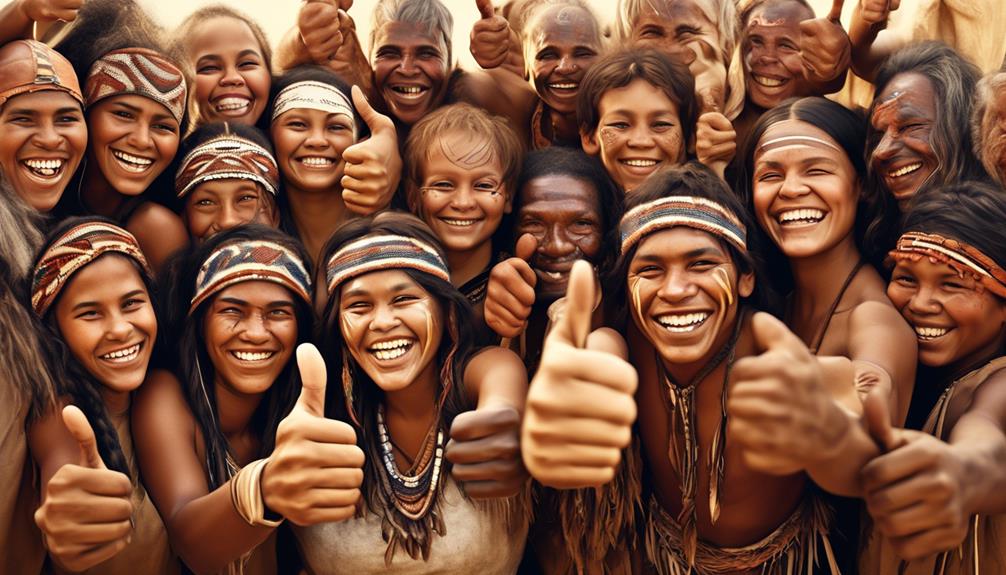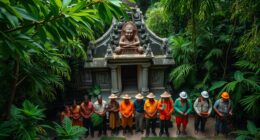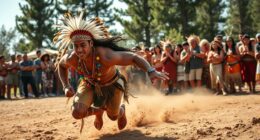You may be aware of the concept of indigenous tribes living in remote areas, distant from modern society. However, some of these tribes are known for their fierce protection of their territory and their hostility towards outsiders.
The reasons behind their aggression are often rooted in a long history of conflict and the struggle to preserve their way of life.
As we explore the most dangerous indigenous tribes, we will uncover the fascinating complexities of their traditions and the challenges they face in today's world.
Key Takeaways
- Sentinel Islanders of India and Jarawa Tribe of the Andaman Islands fiercely protect their isolated homeland, rejecting any form of external influence and striving to preserve their unique cultural heritage and indigenous rights.
- The Yanomami of Brazil and Venezuela are known for their complex kinship systems, shamanistic traditions, and communal rituals. They emphasize dialogue and mediation for conflict resolution within the community, and face ongoing challenges in defending their rights and autonomy.
- The Asmat People of Papua New Guinea embrace a rich cultural heritage and traditional way of life, with intricate woodcarvings serving as a medium for storytelling and preserving their heritage. Their cultural practices are rooted in honoring ancestors and maintaining harmony with nature.
- The Waorani Tribe of Ecuador is dedicated to preserving their cultural traditions and unique language, facing challenges due to deforestation and oil exploration in the Amazon rainforest. They strive for sustainable living practices to balance their needs with preservation, offering valuable lessons in maintaining traditions while adapting to a changing world.
The Sentinel Islanders of India
The Sentinel Islanders of India fiercely protect their isolated homeland in the Andaman Islands, maintaining a steadfast resistance to outside contact. This isolated community has consistently rejected any form of external influence for centuries, striving to preserve their unique cultural heritage and indigenous rights.
The tribe's dedication to cultural preservation is deeply rooted in their history, reflecting a universal struggle among indigenous groups worldwide. Similar to the Yanomami health crisis, where outside contact led to devastating consequences for the tribe, the Sentinel Islanders' determination to remain isolated is a protective measure against potential threats to their well-being.
Their stance mirrors the efforts of the Asmat people in preserving their art and culture in the face of modernization. The strong resistance of the Sentinel Islanders serves as a testament to the resilience and determination of indigenous communities to safeguard their way of life. It also highlights the need for mutual respect and understanding between different cultures, acknowledging the significance of cultural diversity and the importance of preserving indigenous traditions.
The Yanomami of Brazil and Venezuela
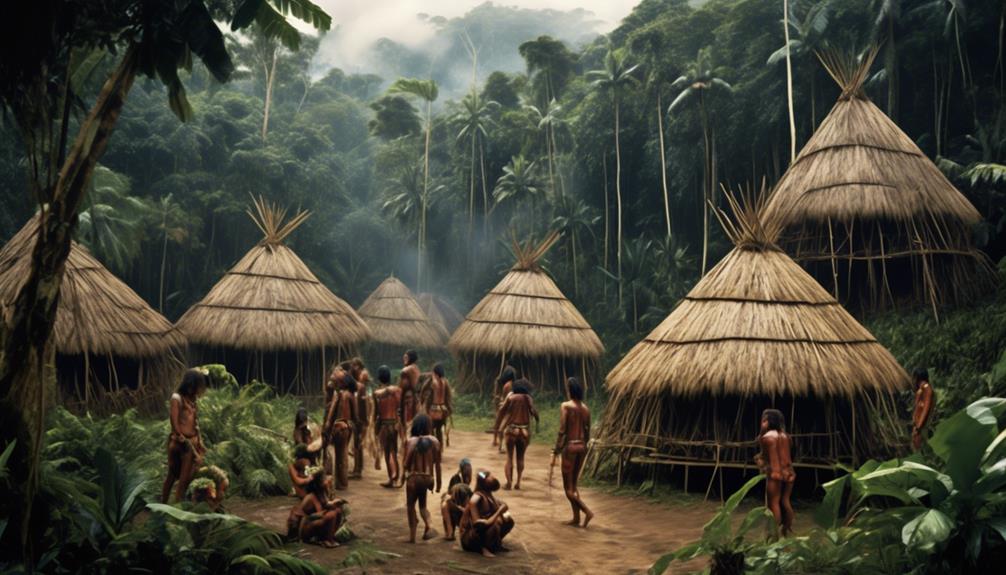
Fiercely protecting their isolated homeland, the Yanomami of Brazil and Venezuela, like the Sentinel Islanders of India, maintain a steadfast resistance to outside contact to preserve their unique cultural heritage and indigenous rights. The Yanomami people have a rich and intricate culture, rooted in their deep connection to the rainforest. They're known for their complex kinship systems, shamanistic traditions, and vibrant communal rituals.
Yanomami conflict resolution techniques are deeply ingrained in their cultural practices, emphasizing dialogue and mediation to settle disputes within the community. These techniques often involve the intervention of respected elders and leaders, who play a crucial role in maintaining harmony and resolving conflicts peacefully.
Yanomami culture places a strong emphasis on communal living and reciprocity, with a collective approach to decision-making and resource management. This communal lifestyle has allowed the Yanomami to thrive in the challenging rainforest environment, fostering a deep sense of unity and cooperation within their communities.
The Yanomami's determination to preserve their traditions and protect their ancestral lands has at times led to clashes with outside forces, highlighting the ongoing challenges they face in defending their rights and autonomy.
The Asmat People of Papua New Guinea
Deeply rooted in the intricate mangrove forests of Papua New Guinea, the Asmat people embrace a rich cultural heritage and traditional way of life. The Asmat, known for their exceptional woodcarvings and intricate art, have a deep connection to the natural world and their ancestors. Their cultural practices and traditional beliefs have sustained their community for centuries.
| Cultural Practices | Traditional Beliefs | Artistic Expression |
|---|---|---|
| Elaborate woodcarvings depict ancestral spirits and stories | Belief in the importance of honoring ancestors and maintaining harmony with nature | Intricate art reflects the Asmat's deep spiritual connection with the natural world |
The Asmat people's artistic expression is intertwined with their traditional beliefs, often portraying the spirits and stories passed down through generations. Their woodcarvings, in particular, serve as a medium for storytelling and preserving their cultural heritage. The Asmat's reverence for their ancestors and the natural world is evident in their cultural practices, reflecting a profound connection to their environment and spiritual realm.
The Waorani Tribe of Ecuador
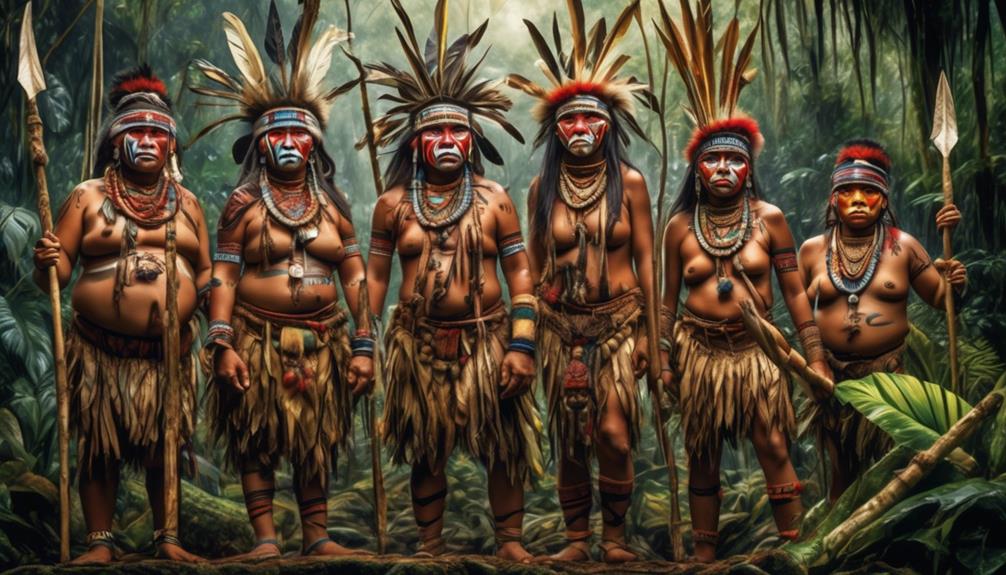
Rooted in the depths of the Amazon rainforest, the Waorani Tribe of Ecuador maintains a rich cultural heritage and traditional lifestyle, similar to the Asmat people of Papua New Guinea. The Waorani people have a deep connection to their ancestral lands and have preserved their traditional hunting practices for generations.
Here are some key aspects of the Waorani Tribe's way of life:
- Traditional Hunting Practices: The Waorani Tribe is known for their expertise in hunting with blowguns and spears, techniques that have been passed down through the ages.
- Cultural Preservation: The Waorani people are dedicated to preserving their cultural traditions, including their unique language and spiritual beliefs, despite the encroachment of modern society.
- Environmental Impact: The tribe has faced challenges due to deforestation and oil exploration in the Amazon rainforest, impacting their traditional way of life and the ecosystem they rely on for sustenance.
- Sustainable Living Practices: Despite these challenges, the Waorani Tribe continues to strive for sustainable living practices, seeking to balance their needs with the preservation of the rainforest.
The Waorani Tribe's commitment to cultural preservation and sustainable living practices offers valuable lessons in maintaining traditions while adapting to a changing world.
The Jarawa Tribe of the Andaman Islands
The Jarawa Tribe of the Andaman Islands maintains a traditional way of life deeply connected to their ancestral lands and the surrounding ecosystem. Their existence raises critical human rights implications and challenges related to cultural preservation.
The impact of tourism and government intervention has significantly affected the Jarawa Tribe. The influx of tourists has encroached upon their ancestral lands, disrupting their traditional way of life and endangering their cultural heritage. This intrusion has also led to exploitative practices and human rights abuses, including the exploitation of Jarawa women and children.
Government intervention, though aimed at protecting the tribe, has at times been controversial and has raised concerns about the infringement of the Jarawa people's rights. Efforts to limit contact between the Jarawa and outsiders have been made in order to preserve their cultural integrity. However, these efforts have also been criticized for potentially further marginalizing and isolating the Jarawa from the rest of society.
The delicate balance between preserving the Jarawa Tribe's cultural heritage and ensuring their human rights remains a complex and ongoing challenge. It necessitates a nuanced approach that respects the Jarawa's autonomy while also addressing their vulnerability to exploitation and external influences.
Frequently Asked Questions
Are There Any Efforts Being Made to Establish Peaceful Communication and Understanding With These Indigenous Tribes?
Efforts are being made to establish peaceful communication and understanding with indigenous tribes.
Many organizations and governments are working to promote peaceful coexistence through cultural exchange and respecting traditional practices.
These efforts involve building relationships based on mutual understanding and respect.
What Are the Traditional Cultural Practices and Beliefs of These Tribes?
Traditional ceremonies and spiritual beliefs are integral to the cultural practices of these tribes.
Ceremonies often center around important events, such as harvests or coming of age rituals.
Spiritual beliefs are deeply tied to nature and the spirit world, with a strong emphasis on maintaining harmony and balance with the environment.
These practices and beliefs have been passed down through generations and continue to play a vital role in the daily lives of these indigenous tribes.
How Do These Tribes Interact With the Modern World and Outside Influences?
In the modern world, intertribal relations and cultural assimilation play a significant role in the interactions of indigenous tribes with outside influences.
These tribes navigate a complex landscape of preserving their traditional practices while also engaging with the broader society.
They often face challenges in balancing their heritage with external pressures, leading to a diverse range of interactions with the modern world.
What Are the Main Threats to the Survival of These Indigenous Tribes?
The survival of indigenous tribes is threatened by various factors, including exploitation, land encroachment, and violations of indigenous rights.
These tribes face challenges from outside influences that seek to exploit their land and resources, often disregarding their rights and autonomy.
As a result, their traditional way of life and cultural heritage are endangered.
It's crucial to address these threats and work towards protecting the rights and well-being of indigenous tribes.
Are There Any Success Stories of Cooperation and Coexistence Between These Tribes and Outside Societies?
Cooperative initiatives and coexistence success stories between indigenous tribes and outside societies have been documented. These instances showcase the positive outcomes of respectful collaboration and understanding.
By engaging in mutual dialogue and acknowledging each other's rights, indigenous tribes and external communities have cultivated meaningful partnerships. These success stories highlight the potential for peaceful coexistence and the preservation of indigenous cultures.
Such endeavors demonstrate the importance of respectful engagement and cooperative efforts.
Conclusion
In conclusion, these indigenous tribes serve as symbols of resilience and the preservation of ancient traditions in a rapidly changing world.
Their isolation and fierce protection of their land and way of life serve as a reminder of the importance of respecting and preserving diverse cultures.
Despite their reputation as dangerous, these tribes are simply protecting what's sacred to them, and their existence is a testament to the strength of human diversity.
Talise is a talented writer and an expert in her field. Her unique perspective and insights enrich our content with depth and authenticity. With a wealth of knowledge and a strong connection to the subjects she writes about, Talise crafts engaging and informative articles that resonate with our readers. Her dedication to bringing Indigenous culture and wisdom to light is truly commendable.
